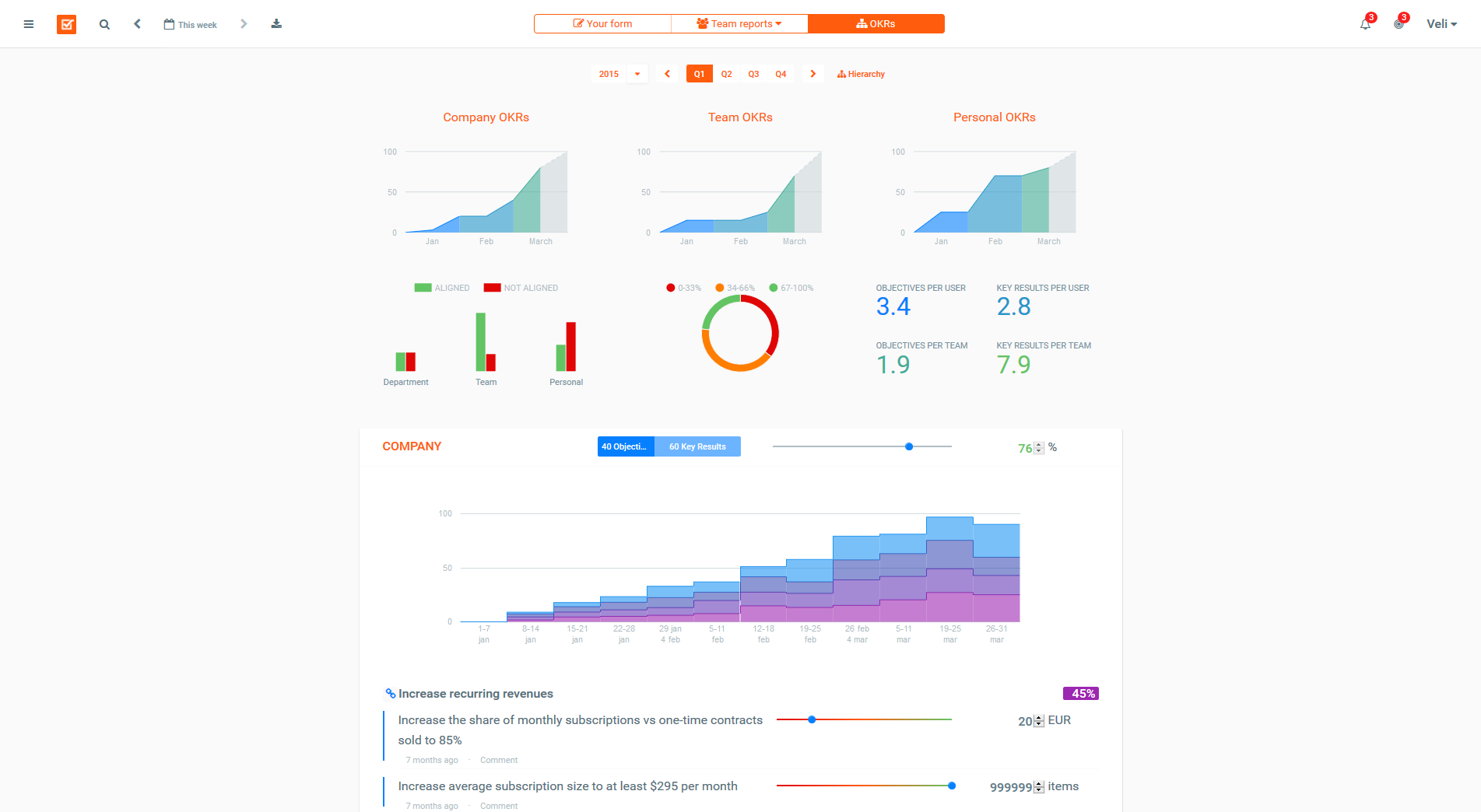According to the “Step by Step Guide to OKRs”, the history of OKR methodology started its climb to popularity when John Doerr introduced OKRs at Google in 1999. But actually, OKR methodology had been championed even earlier by Andy Grove, the late CEO of Intel during the 1970s.
Doerr has said: “I remember being intrigued with the idea of having a beacon or north star every quarter, which helped set my priorities. It was also incredibly powerful for me to see Andy’s OKRs, my manager’s OKRs, and the OKRs for my peers. I was quickly able to tie my work directly to the company’s goals. I kept my OKRs pinned up in my office and I wrote new OKRs every quarter, and the system has stayed with me ever since.”
The beggining of history of OKRs.
The birth of OKRs can be traced back to Peter Drucker. He was one of the first managerial thinkers. And in the 1950s he introduced a system called “Management by Objectives” (MBOs). That system called for setting objectives for everyone who works in a company. These goals had to “lay out what contributions a given individual and their unit are expected to make to help other units obtain their objectives.”
Andy Grove, CEO of Intel, reshaped the MBO system into a simpler form that answers the questions:
- Where do I want to go?
- How will I pace myself to get there?
He also suggested objectives should be set more frequently, on a quarterly or monthly basis. Arguing that as the fast-paced world requires constant feedback. He also believed multiple performance management tools should be used in conjunction with OKRs. Finally, he believed OKRs should be stretch goals and achieving them 100 percent should be next to impossible.
Having gotten a lot of leadership lessons from Grove, John Doerr introduced the system to Larry Page and Sergey Brin, co-founders of Google.
First OKR software providers
In 2010-2013 many OKR software providers appeared. One of the first was Weekdone, which still is one of the market leaders. OKR software automates the whole process of OKRs. You can try out Weekdone for free here.


